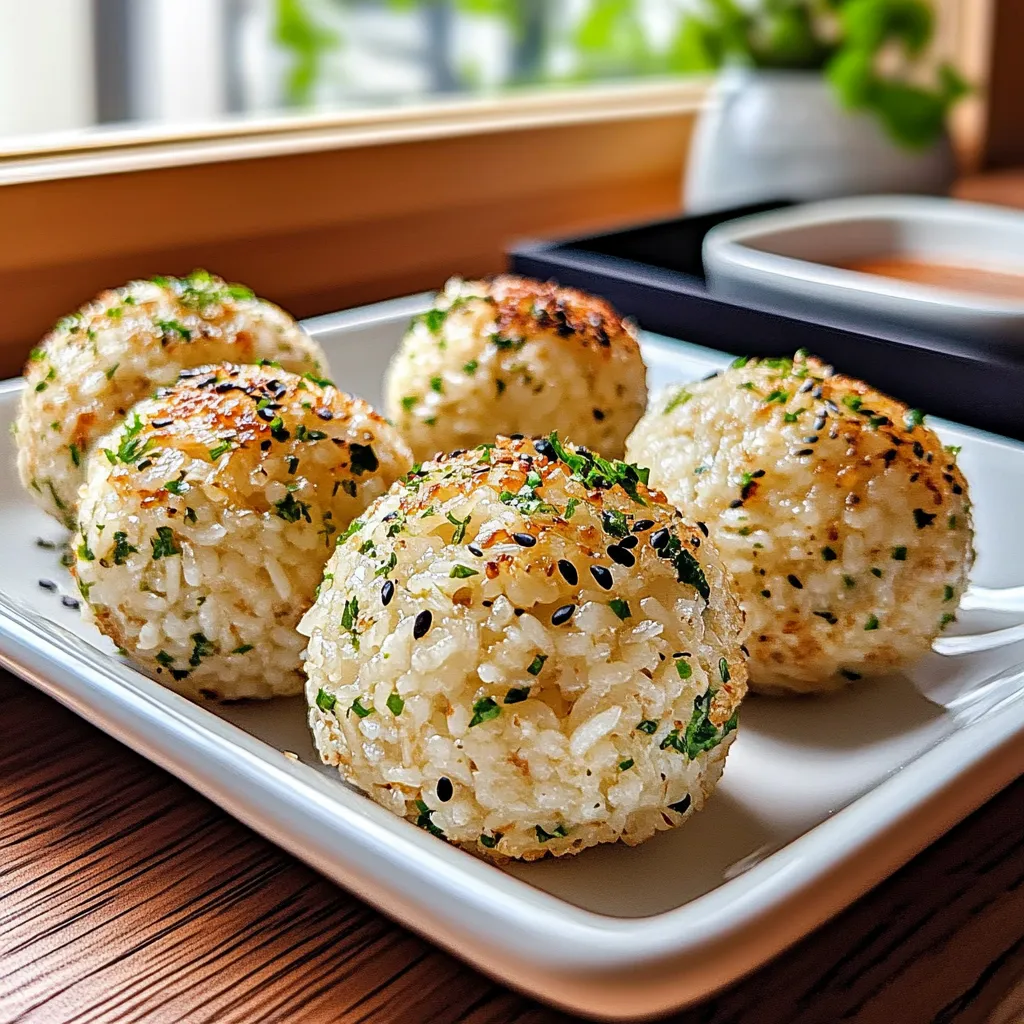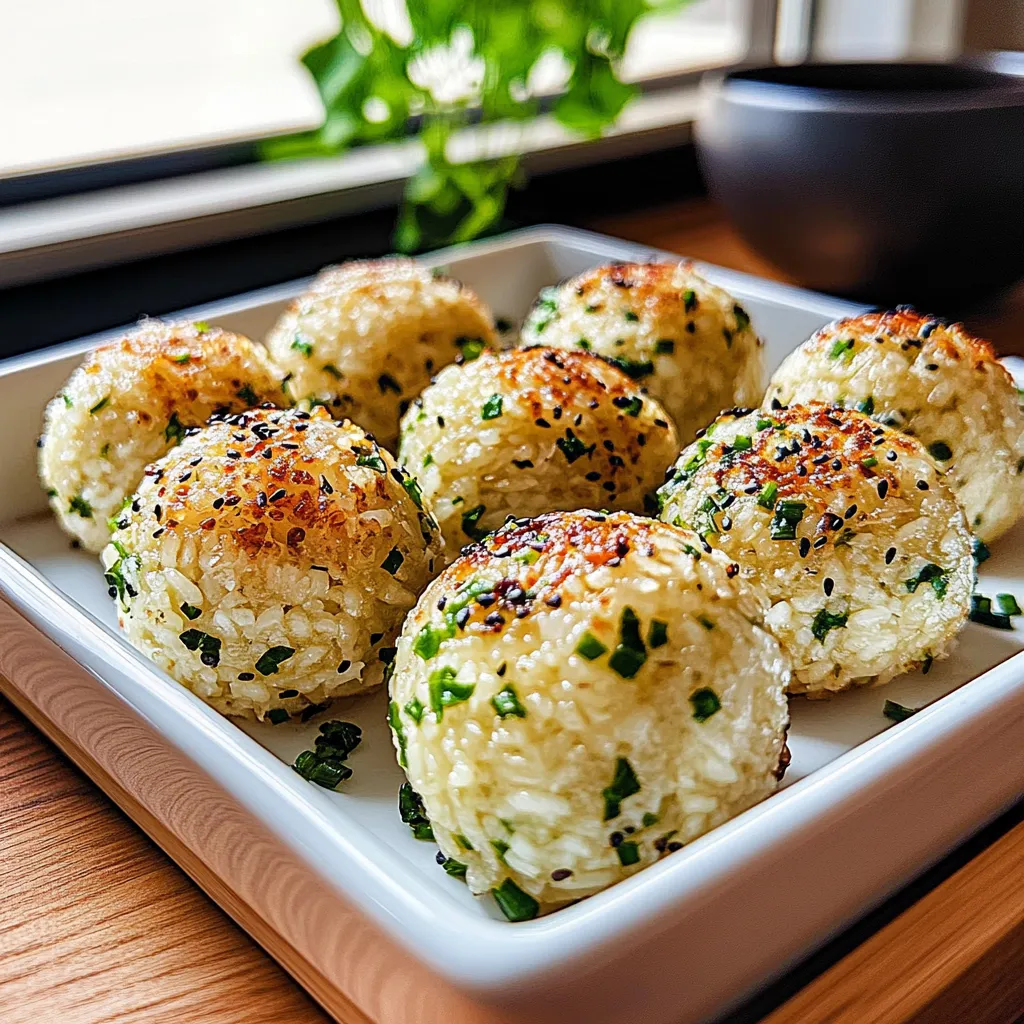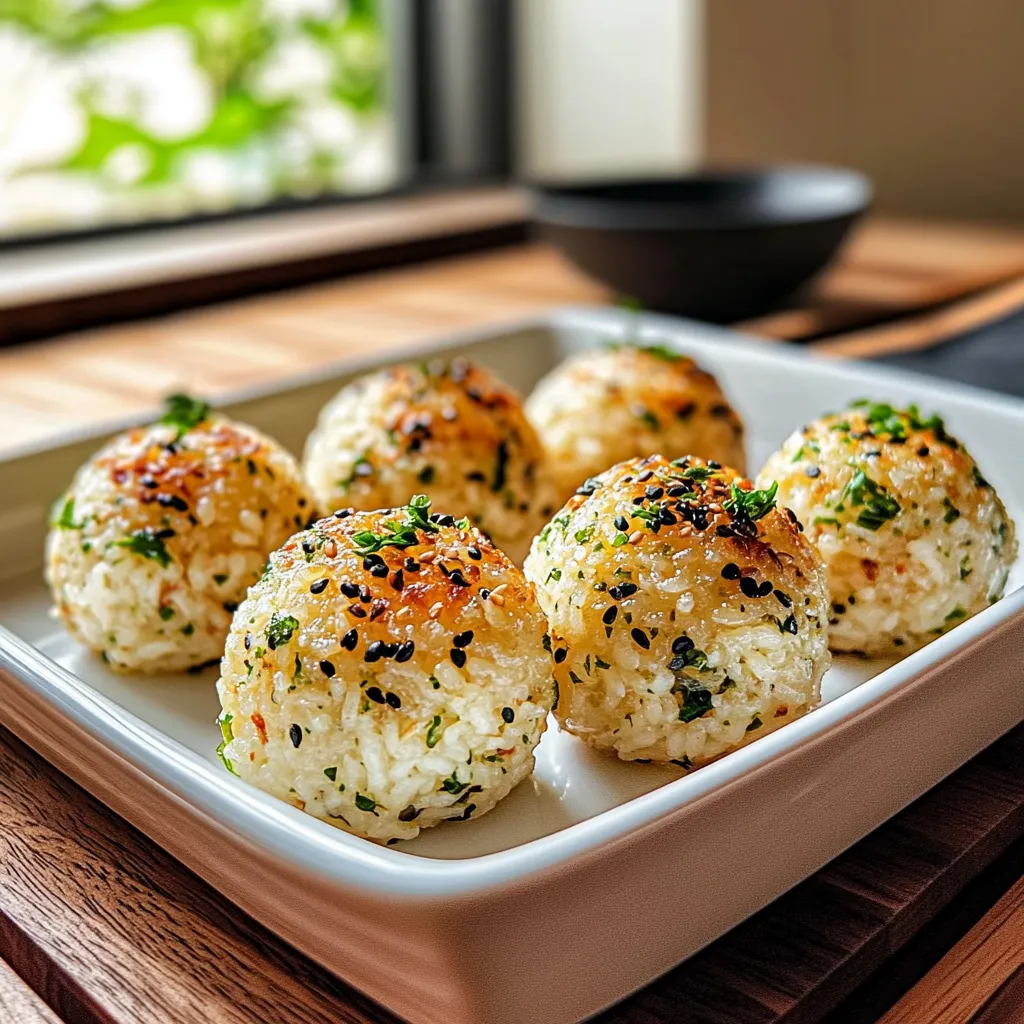 Pin it
Pin it
Korean rice balls are the perfect snack or lunchbox treat when you want something fun, flavorful, and a little different from the usual sandwich. They are easy to customize with whatever you have on hand, and the combination of savory fillings with seasoned rice and crunchy seaweed is always a winner in my house.
I remember making these with my children on rainy afternoons—they always loved mixing the fillings and shaping the rice with their hands, and it became a kitchen tradition on family picnic days.
Ingredients
- Cooked short-grain rice: Provides the essential sticky texture that binds everything together
- Sesame oil: Adds richness and a nutty aroma choose toasted oil for more depth
- Salt: Enhances the flavors of the rice and fillings use fine sea salt for even seasoning
- Canned tuna mixed with mayonnaise: Creates a creamy and protein-packed filling make sure to drain the tuna well
- Cooked bulgogi beef: Gives a sweet and savory kick chop it finely for the best blend
- Finely chopped kimchi: Brings a spicy tang squeeze out the liquid so the rice does not get soggy
- Shredded cooked chicken: With a dash of soy sauce is a mild option for those who prefer something simple and savory
- Roasted seaweed flakes: Provide a toasty flavor and a little crunch look for gim or nori at Asian markets
- Sesame seeds: Add texture and a nutty finish toast them gently for extra flavor
- Soy sauce: Deepens the umami profile low sodium is fine if you prefer
- Gochugaru or Korean red pepper flakes: For those who want some heat use freshly opened flakes for the boldest color and taste
Step-by-Step Instructions
- Prepare the Rice:
- Cook short-grain rice according to the package or your usual method. Make sure it is slightly sticky but holds its shape. While hot, stir in sesame oil and salt, mixing well to coat every grain for a fragrant glossy finish.
- Prepare the Filling:
- Pick your desired filling like tuna and mayo, chopped bulgogi, chopped kimchi, or seasoned shredded chicken. For tuna, mix with mayonnaise in a small bowl to make it creamy. For bulgogi or chicken, make sure to chop finely so there are no large chunks. If using kimchi, press out the moisture before chopping to avoid a wet mixture.
- Mix Rice and Fillings:
- In a large mixing bowl, combine the seasoned rice and your chosen filling. Add seaweed flakes, sesame seeds, soy sauce, and gochugaru if using. Gently fold everything together with a rice paddle or spatula so all ingredients are evenly distributed without mashing the rice.
- Shape the Rice Balls:
- Fill a small bowl with cold water and dip your hands to prevent sticking. Scoop about a quarter cup of the rice mixture and press it firmly between your palms, rolling lightly with your fingertips to create a compact round ball. Repeat this process with the rest of the rice mixture, wetting your hands as needed.
- Serve or Store:
- Line a plate with parchment or plastic wrap to keep the rice balls from sticking. Serve immediately at room temperature or cover tightly with plastic wrap and refrigerate for later enjoyment. They keep best within one day and can be enjoyed cold or after sitting out for a few minutes.
 Pin it
Pin it
I always reach for seaweed flakes—my favorite ingredient in this recipe—because they transform the rice balls from basic to delicious. The first time I made these for a picnic, my family could not believe how good something so simple could taste.
Storage Tips
To keep the rice balls soft and flavorful, wrap each tightly in plastic wrap after shaping. Store them in the fridge for up to twenty four hours. If you need longer storage, consider freezing—just be aware that the texture may change slightly upon thawing.
Ingredient Substitutions
If you do not eat seafood, swap tuna for mashed chickpeas mixed with a little vegan mayo. No bulgogi on hand Use any seasoned ground meat or tofu crumbles instead. Diced pickles or sautéed mushrooms can be a great choice if kimchi is not your thing.
Serving Suggestions
Korean rice balls are excellent for lunchboxes picnics or road trips. Try pairing them with fresh fruit or steamed veggies for a more complete meal. For a fun party platter, offer little bowls of soy sauce gochujang or extra seaweed for dipping.
Cultural Context
Rice balls have a special place in Korean home cooking known as jumeokbap which means fist rice. Traditionally made using leftovers and whatever is available they are a symbol of comfort and resourcefulness. Making them often brings back memories of childhood lunches and family gatherings spent together.
 Pin it
Pin it
These rice balls are a versatile and delicious way to enjoy Korean flavors in a fun, portable form!
Frequently Asked Questions
- → What type of rice is best?
Short-grain rice is ideal as it is sticky enough to hold its shape when molded into balls.
- → Can the fillings be mixed?
Yes, feel free to use one type or combine options like kimchi and bulgogi for unique flavors.
- → How do I keep rice balls from sticking to my hands?
Lightly wet your hands with water before shaping the rice to prevent sticking.
- → How should these rice balls be stored?
Wrap them tightly in plastic wrap and refrigerate for up to 24 hours for best freshness.
- → Are spicy options available for seasoning?
Adding gochugaru, or Korean red pepper flakes, gives a gentle kick to the rice balls.
- → Can I prepare these ahead of time?
Yes, you can make them in advance and enjoy cold or at room temperature within a day.
